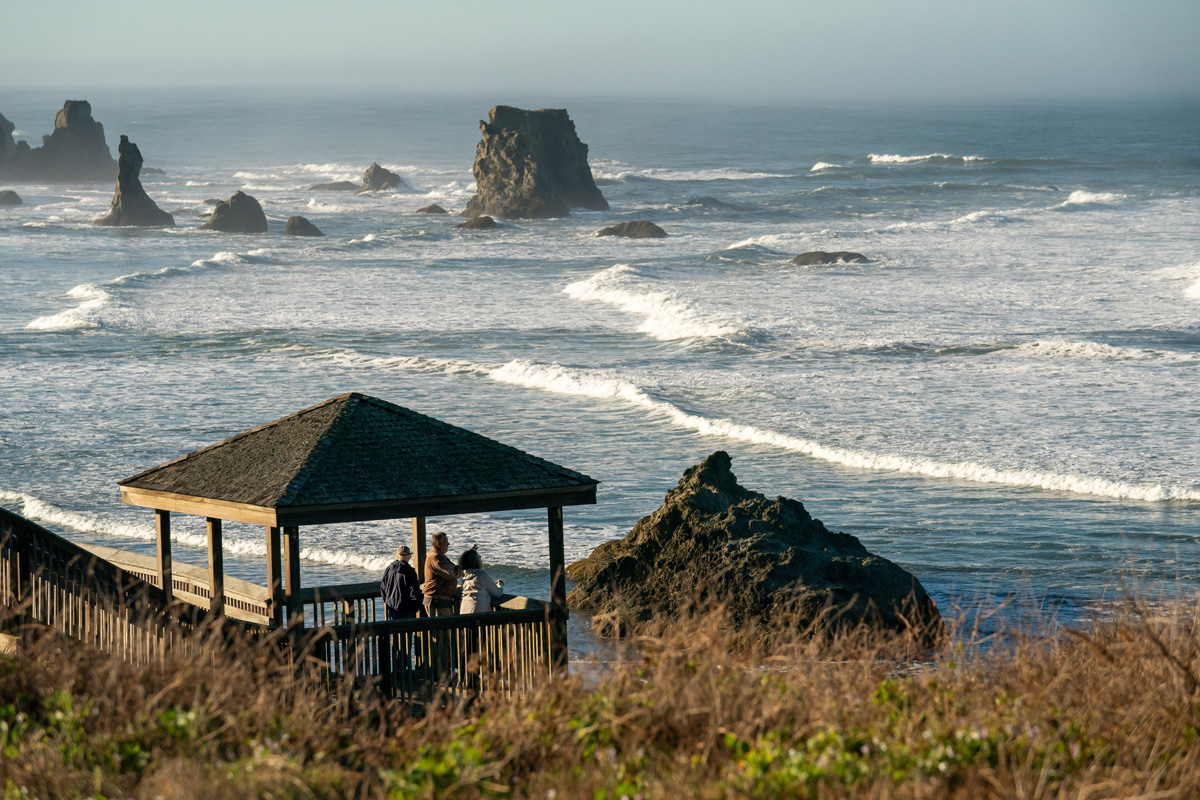
With 363 miles of public coastline, the opportunities for exploration on the Oregon Coast are endless. While it’s an amazing place to visit year-round, you’ll want to take a few extra precautions to stay safe during the winter months.
Keep Your Distance While Storm Watching
Pulling up to watch magnificent waves roll in over miles of ocean is a thrilling experience unlike any other. When storms hit the Coast, you can witness dramatic, turbulent swells turn into powerful, 30-foot-tall crashing waves. The best time to catch a storm is between November and March.
A few great viewing options include Shore Acres State Park near Coos Bay, Boiler Bay State Scenic Viewpoint near Lincoln City, and Fort Stevens State Park near Astoria. Always keep a safe distance as king tides — large tides that occur a few times a year — can envelop a beach in a matter of moments. Remember that the best place to enjoy these storms is under a blanket in front of a big window at one of Oregon’s many coastal hotels, especially those that offer a high vantage point. Visit the Oregon State Parks beach safety page for additional tips.
Always Face the Ocean
Never turn your back to the water. This weathered adage holds true for even the calmest days. This keeps you prepared for sneaker waves, which, as the name suggests, are an unpredictable and powerful force that can easily sweep you off of your feet. Also while walking along the shore, stay off of logs. They absorb water, which increases their weight, and the ocean is strong enough to easily roll the logs onto you or someone else.
It’s important to know the timing of the tides in the areas you’re exploring, especially when venturing to tide pools and secluded beaches. Fast-moving tides can leave you stranded from shore. Here are the tide tables for the South Coast (Brookings to Reedsport), Central Coast (Dunes City to Lincoln City) and North Coast (Neskowin to Astoria).
Protect Wildlife
Winter is an important time for wildlife on the Coast as well. Take note of signs that limit access to designated areas of shoreline during snowy plover nesting season, which runs March through September. If your dog is having fun on the beach, make sure she does not chase shorebirds because when the birds’ foraging and roosting activities are interrupted, it can cause them to lose important energy reserves. People and dogs must also respect and keep their distance from resting seals.
Hike With Extra Caution
Wet weather leaves rocks slippery, and erosion can make some ledges unstable. The wearing down of rock is what gave the Oregon Coast its dramatic vistas, so be prepared for this geological event to happen at any time. On trails with less altitude, avoid walking near bases of cliffs and bluffs as slides and rock falls can happen in all seasons. Stick to designated trails, which are carefully planned by park rangers to keep you safe. Going off trail is not only dangerous, it’s also harmful to the surrounding ecosystem.
Learn Your Evacuation Routes
Though a tsunami is unlikely to occur during your visit, it’s best to be on the safer side and come prepared. Caused by an underwater earthquake, tsunamis send high waves ashore, sometimes within as little as 15 minutes. Check tsunami evacuation routes for the area you’re visiting so that you’re most prepared should this natural phenomenon occur during your visit.
– Emily Gillespie
in Seasons